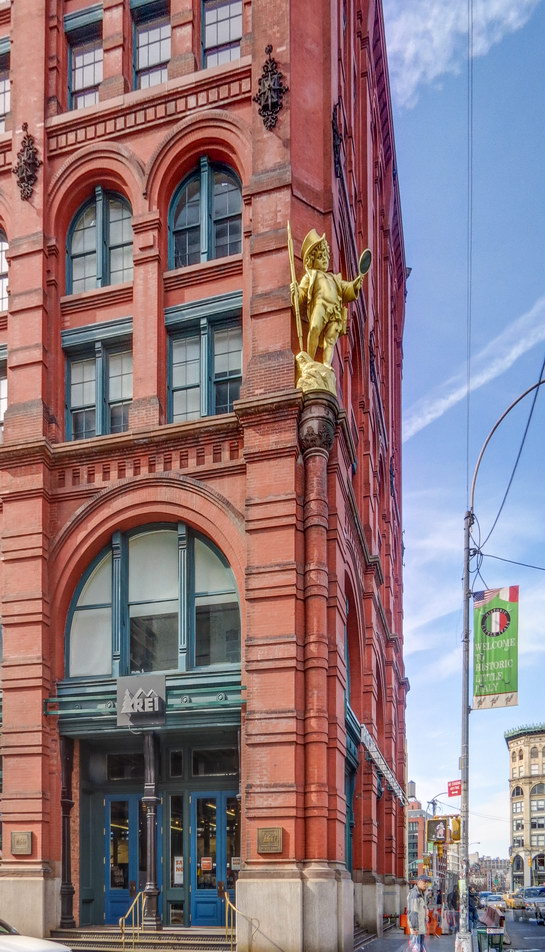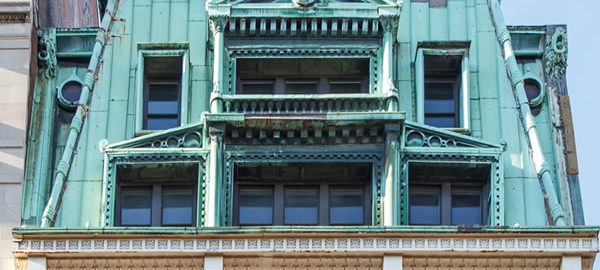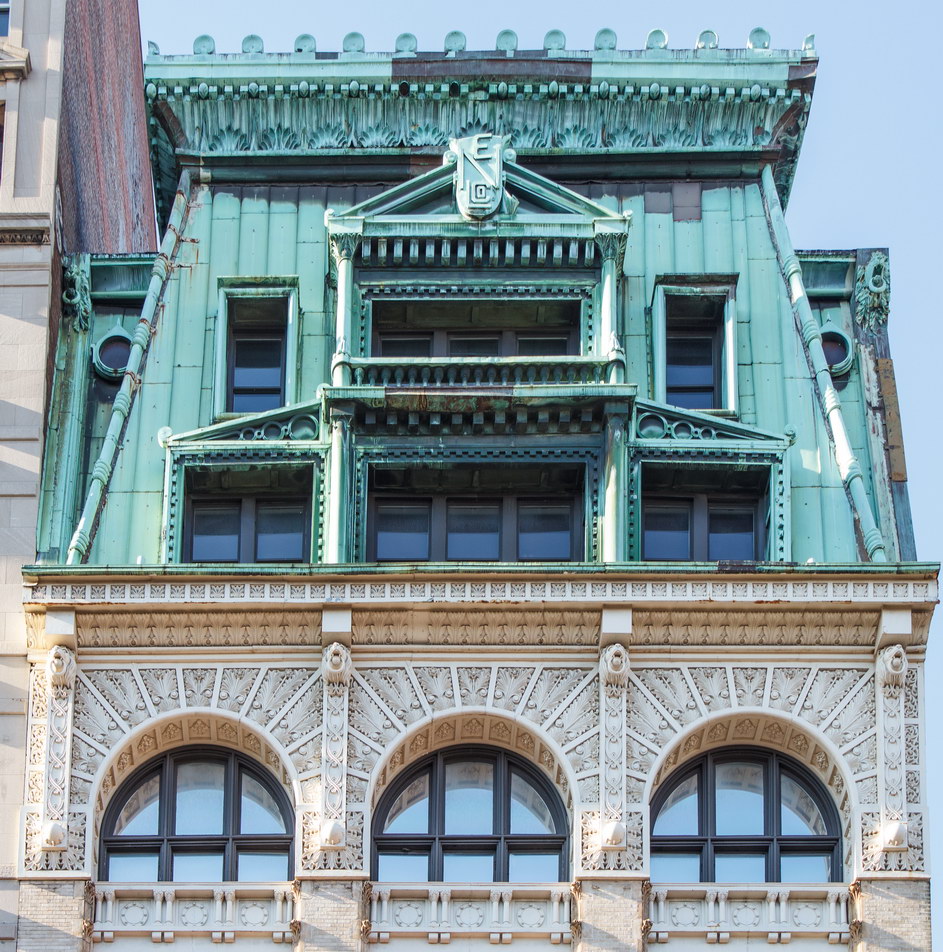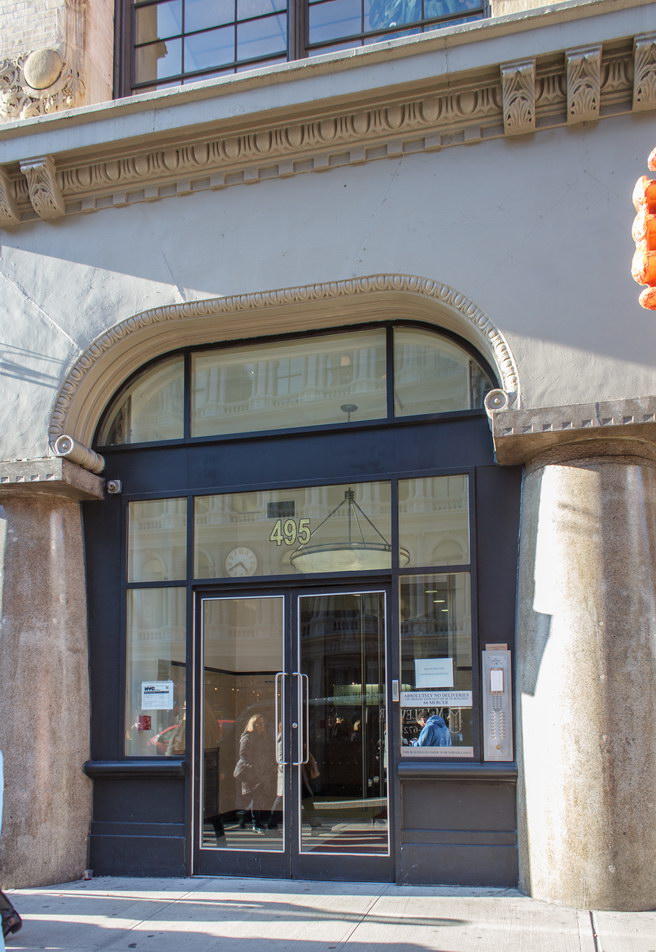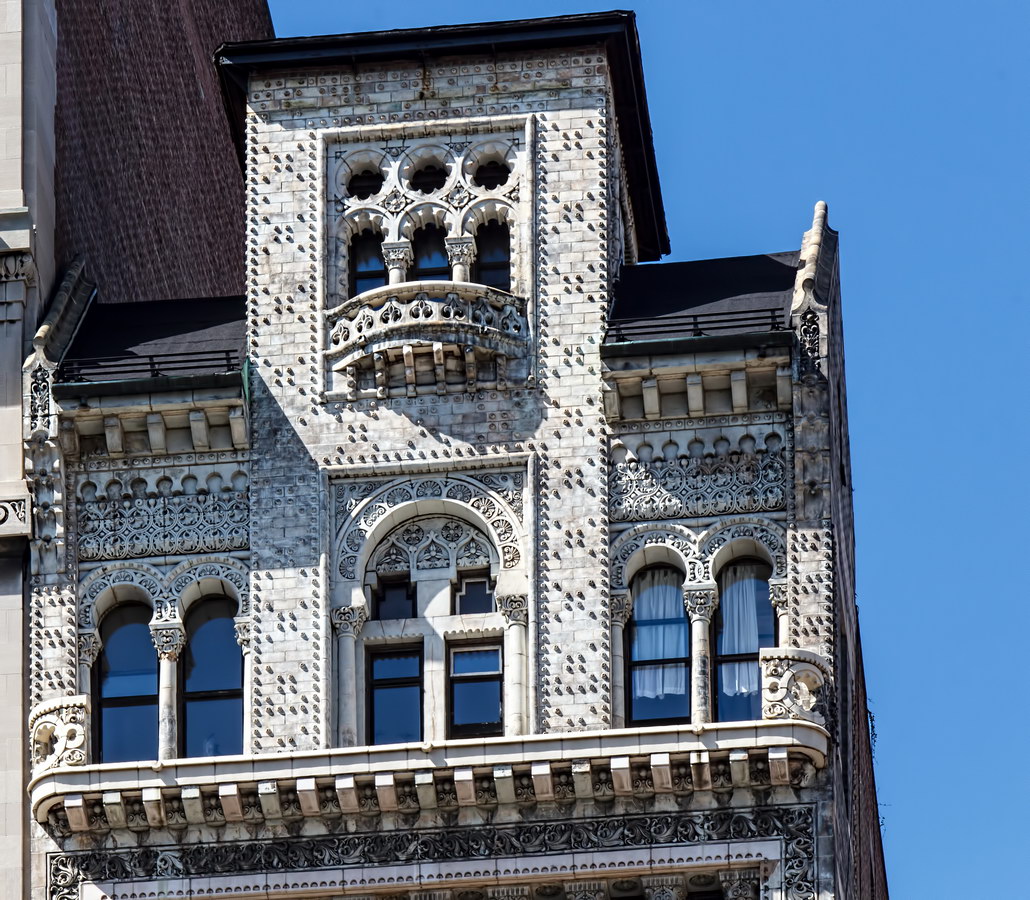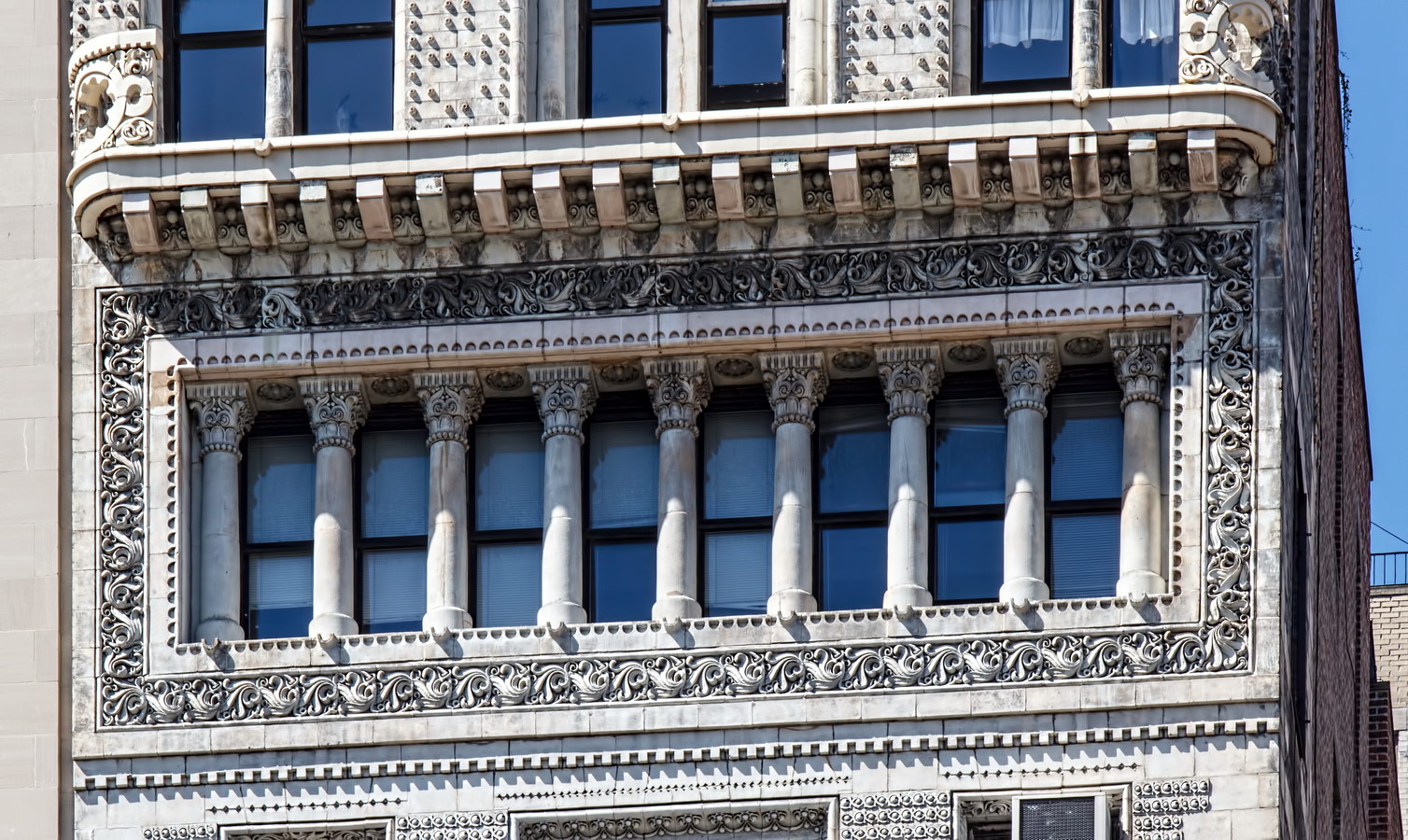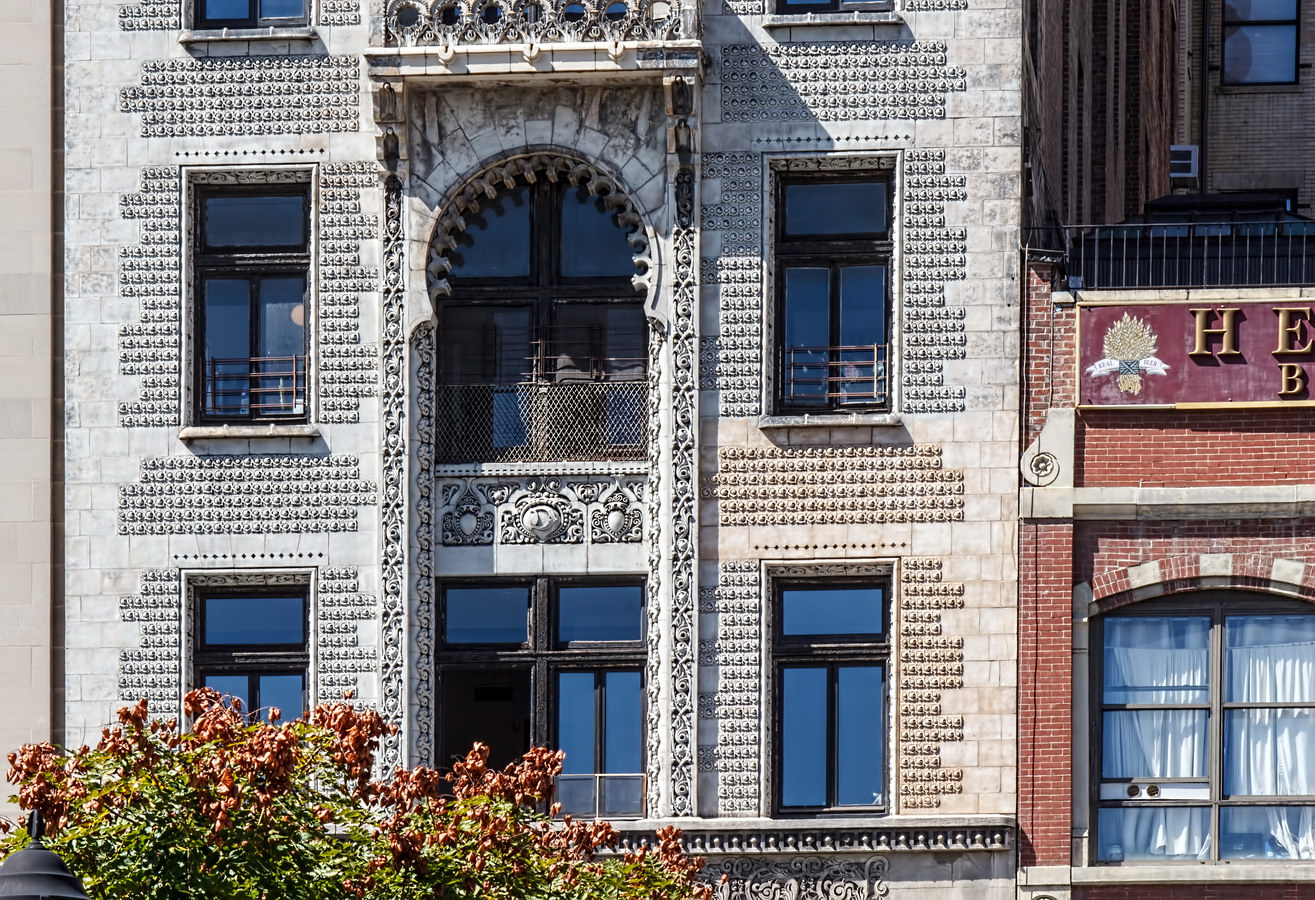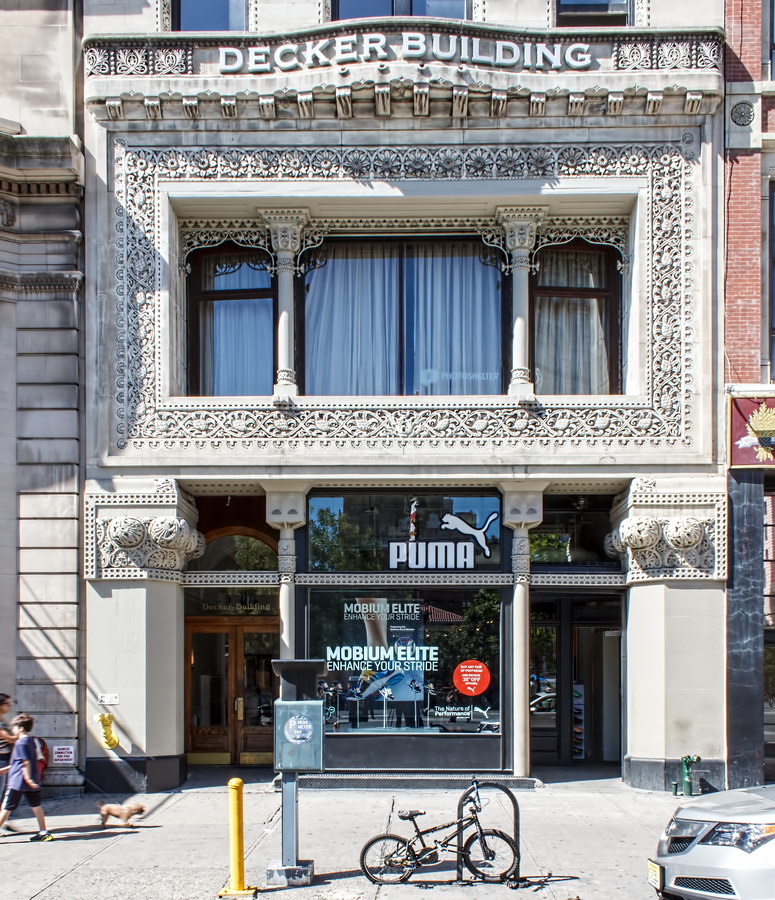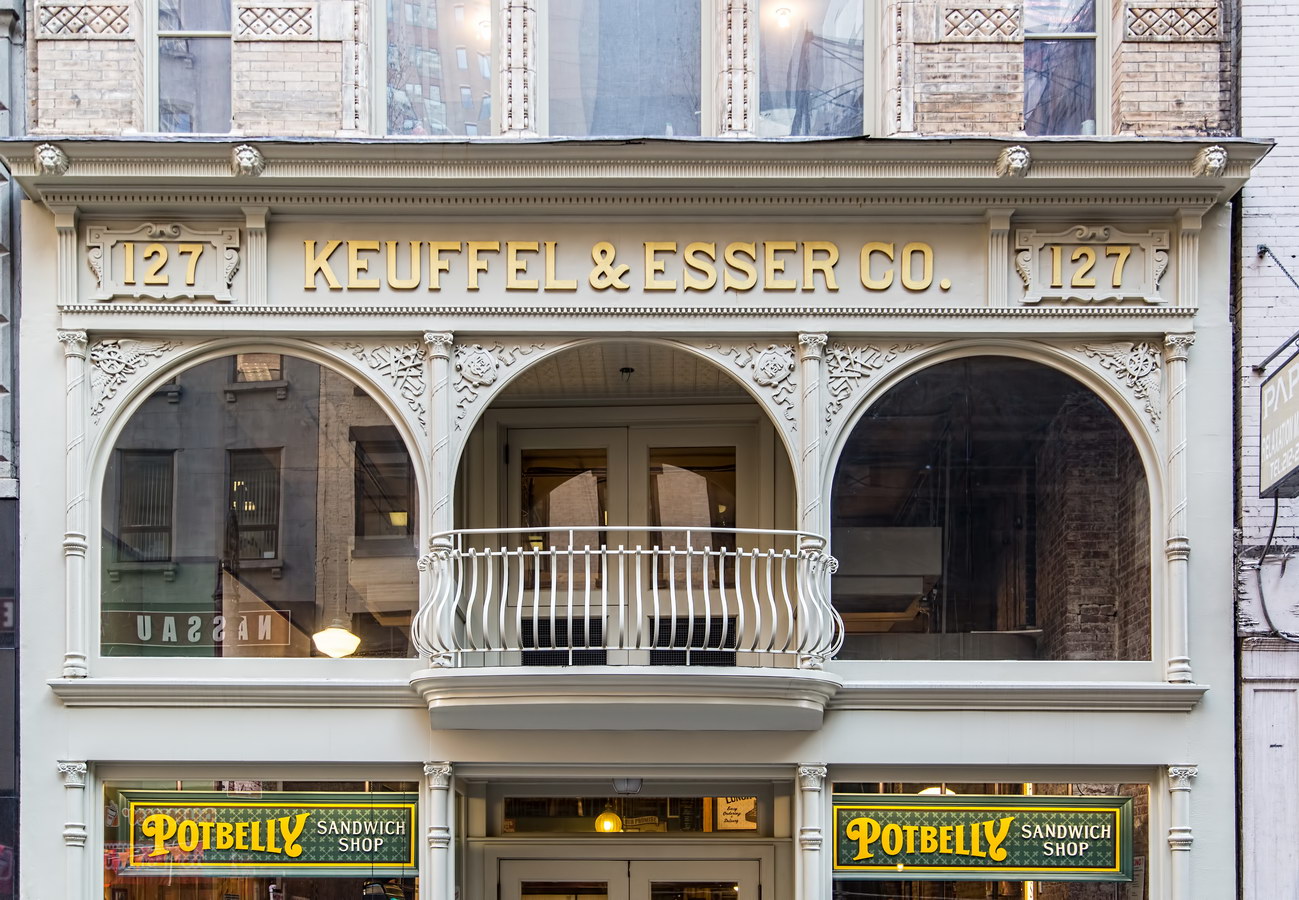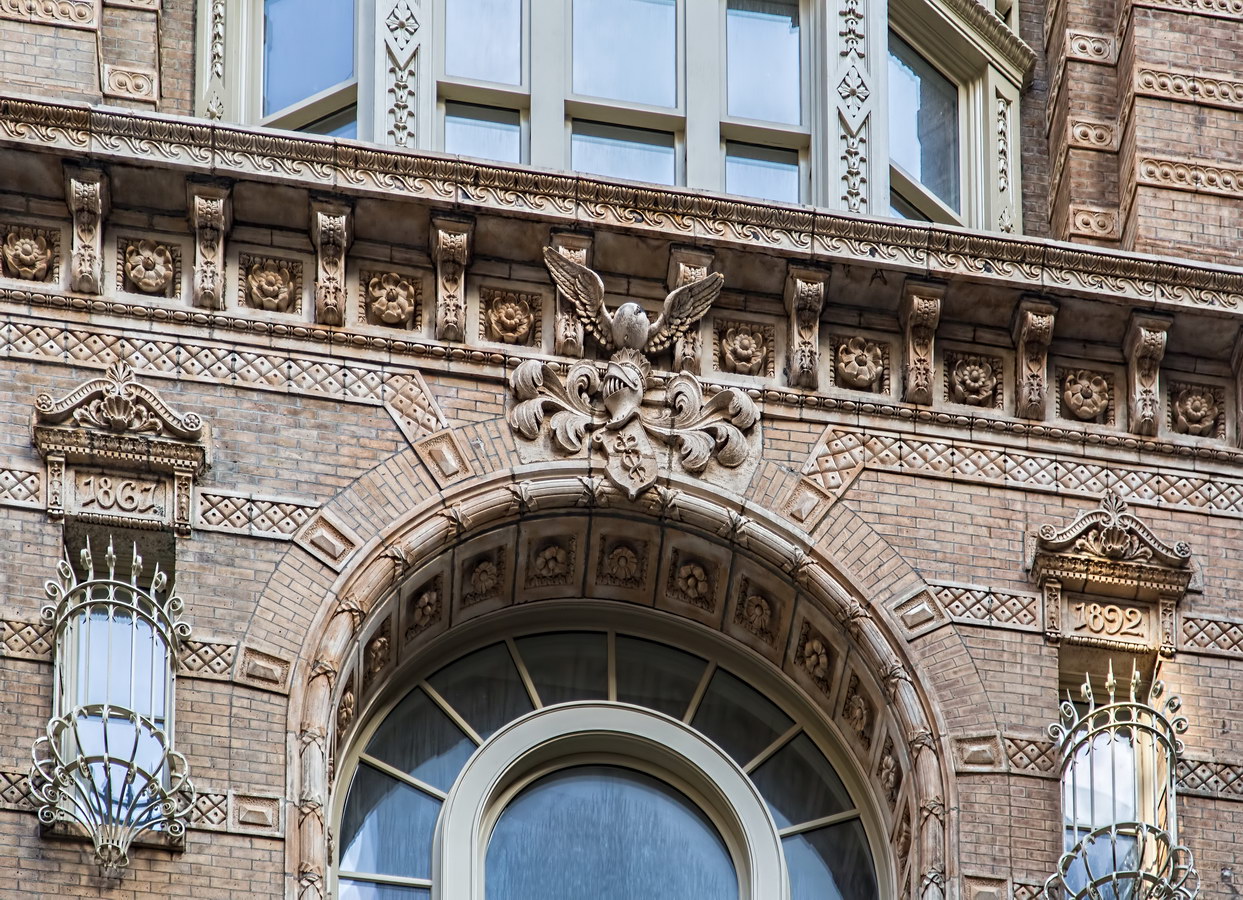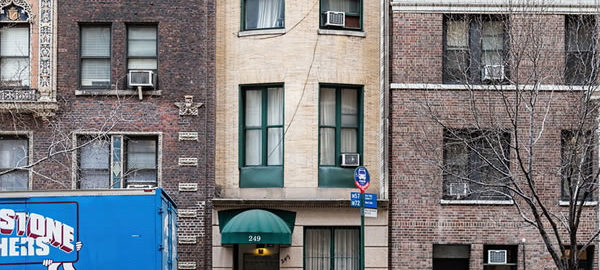256 Fifth Avenue is among the few examples of Moorish Revival architecture in New York City. As the NYC Landmarks Preservation Commission noted, it’s “remarkably intact” for a building that went up in 1893.
The windows steal the show: Their size, shape, number and decoration changes from floor to ornate floor.
Alas, the building is not without alterations. The ground floor storefront is now standard commercial granite; the sixth-floor terra cotta balcony was removed – probably because it was in danger of falling after a century of use. The gaps in the terra cotta were never filled in.
256 Fifth Avenue Vital Statistics
- Location: 256 Fifth Avenue between 28th and 29th Streets
- Year completed: 1893
- Architect: Alfred Zucker and John Edelman
- Floors: 6
- Style: Moorish Revival
- New York City Landmark: 2001 (Madison Square North Historic District)
256 Fifth Avenue Recommended Reading
- NYC Landmarks Preservation Commission designation report (pg. 86)
- Daytonian in Manhattan blog
- Street Easy NY listing
- Emporis database











